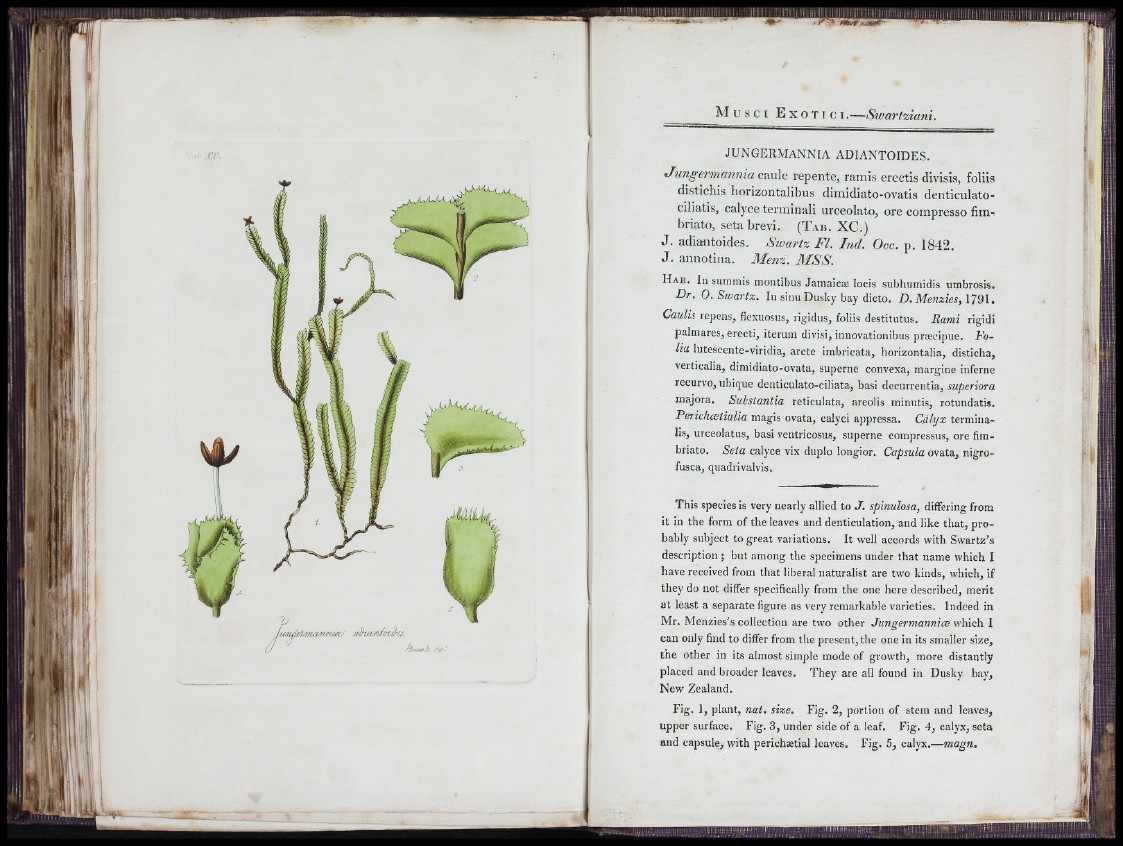
h »
Slu/it/ìkj J'f ■
JUNGERMANNIA ADIANTOIDES.
Jungermannia caule repente, ramis erectis divisis, foliis
distichis horizontalibus dimidiato-ovatis denticulato-
ciliatis, calyce terminali urceolato, ore compresso fimbriato,
seta brevi. (Tab. XC.)
J. adiantoides. Swartz Fl. Ind. Occ. p. 1842.
J. annotina. Menz. M S S .
H a b . In summis montibus Jamaicæ locis subhumidis umbro.sis.
D r. O .Sw a r lz. In sinu Dusky bay dicto. D . Menzies, 1791.
Caulis repens, flexuosus, rigidus, foliis destitutus. Rami rigidi
palmares, erecti, iterum divisi, innovationibus præcipue. Folia
lutescente-viridia, arcte imbricata, horizontalia, disticha,
verticalia, dimidiato-ovata, superne convexa, margine inferne
recurvo, ubique denticulato-ciliata, basi decurrentia, superiora
majora. Sulstantia reticulata, areolis minutis, rotundatis.
Perichcetialia magis ovata, calyci appressa. Cdlyx terminalis,
urceolatus, basi ventricosus, superne compressus, ore fimbriato.
Seta calyce vix duplo longior. Capsula ovata, nigro-
fusca, quadrivalvis.
This species is very nearly allied to J . spimdosa, differing from
it in the form of the leaves and denticulation, and like that, probably
subject to great vaiiations. It well accords with Swartz’s
description ; but among the specimens under that name which I
have received from that liberal naturalist are two kinds, which, if
they do not differ specifically from the one here described, merit
a t least a separate figure as very remarkable varieties. Indeed in
Mr. Menzies’s collection are two other Jungermannioe which I
can only find to differ from the present, the one in its smaller size,
the other in its almost simple mode of growth, more distantly
placed and broader leaves. They are all found in Dusky bay,
New Zealand.
Fig. 1, plant, nat. size. Fig. 2, portion of stem and leaves,
upper surface. Fig. 3, under side of a leaf. Fig. 4, calyx, seta
and capsule, with perichætial leaves. Fig. 5, calyx.—magn.
áí: